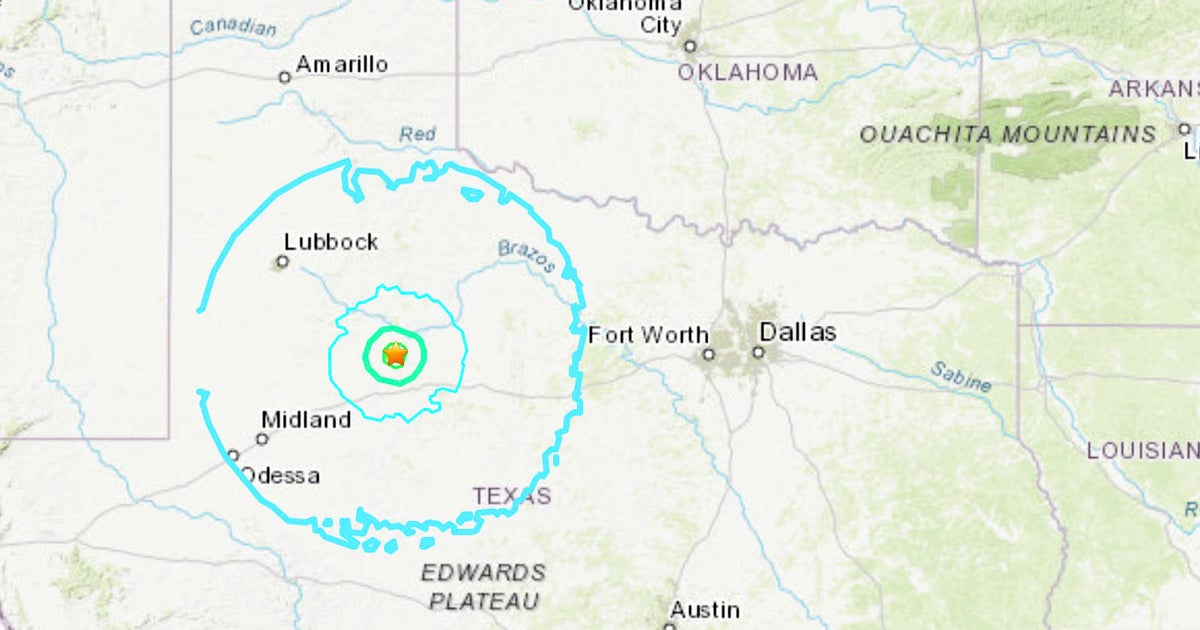Despite population boom, hazmat truck routes in DFW have not been updated in nearly 40 years
DALLAS COUNTY (CBSNewsTexas.com) – Forty miles east of Dallas on Interstate 20, when the lights flash on the commercial motor vehicle inspection station sign, truck drivers are required to pull over. For the trucks selected, for the next 30 minutes, two Texas state troopers will check the engine, the lights, the brakes, as well as ensure the shipping paperwork and hazmat labels match the contents inside.
"We need to know what's on the roadway," explained Texas Department of Public Safety Sgt. Kyle Bradford. "We need to know what kind of hazard it would be to the community if something happened."
Last year, according to U.S. Department of Transportation data, Texas troopers conducted 29,118 hazardous material truck inspections across the state. Troopers cited a violation on nearly a third of the trucks inspected, 9,403 trucks, with 1,736 trucks taken out of service until the violations were fixed.
The top five most common violations had to do with incomplete shipping paperwork and incorrect or missing hazmat warning placards.
These trucks inspections are just one part of a larger safety plan when it comes to the transportation of hazardous material on Texas highways.
With thousands of trucks loaded with hazard material making their way through the Dallas-Fort Worth area every day, a single road accident could be disastrous for nearby neighborhoods.
In the past decade, according to federal transportation data, there's been 266 crashes involving trucks loaded with hazardous material that resulted in monetary damages in Dallas, Tarrant, Collin, and Denton counties. Crashes with reported monetary damages indicate there was an impact on the environment and/or community. These crashes involving trucks carrying hazardous material totaled $5.8 million in damages.
However, Dan Kessler, the assistant director of transportation for the North Central Texas Council of Governments, said the frequency of accidents involving these trucks is "remarkable small" and credits the steps North Texas leaders have made over the past four decades as a key part of the reason.
In the 1980s, local city leaders, concerned about a potential chemical spill happening in densely populated areas of downtown Dallas and Fort Worth, came up with designated hazmat routes.
At the time, put trucks carrying hazardous material on the outer loops of Dallas and Fort Worth, such as I-635 around Dallas, I-820 around Fort Worth, and I-20.
Over the next four decades, the population of North Texas exploded from 3 million to 8 million residents yet, the designated hazmat routes have stayed the same.
Source: Federal Motor Carrier Safety Administration
Kessler headed up the study on designated hazmat routes for North Texas that were officially adopted in 1985. Today, he still oversees the hazardous material routes.
Kessler said, despite the population growth, the current designated routes remain the best options.
The main goal of the hazmat routes is to ensure trucks carrying hazardous material stay out of the densely populated downtown districts of Dallas and Fort Worth. Kessler points out the routes still achieve that goal today.
Also, by knowing what highways these trucks travel, local first responders can be better prepared and positions to react to a potential chemical spill.
Plus, there is not a completed further outer loop around the Dallas-Fort Worth metroplex for trucks with dangerous chemicals to take.
"I think the thing to remember, and this is the part that is hard to understand, is we don't have a lot of other options," Kessler explained.
Kessler said safer options for the transportation of hazardous material is something regional planners look at all the time. However, the region's latest long-range transportation plan, projected out to 2045, does not include a continuous outer loop. Federal regulations require regional planners to only proposed road projects where funding can be identified. Currently, there is no revenue stream to pay for a new hazmat route.
State troopers advise drivers, especially when traveling on the designated hazmat routes, to be on the lookout for diamond shaped placards on the sides and back of trucks indicating that there is hazardous material onboard. Sgt. Bradford said drivers should give these trucks extra room on the highways to avoid a potential accident.







